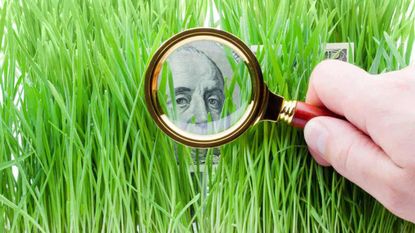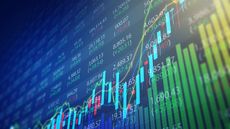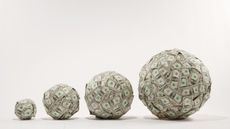Searching for Yield? Making a Case for High-Yield Bonds
High-yield bonds are an often-misunderstood asset class that could deserve a spot in your portfolio.


When COVID-19 first rocked the financial markets in March, most investors were focused on the carnage in the stock market. But I took a different approach.
During this period, I advised my clients with a high tolerance for risk to consider one move: to swap approximately 10% to 15% of their high-quality bonds for high-yield bonds. Although I was confident the shift would result in a favorable outcome looking out a year or more, the move has paid off much quicker than anticipated. High-quality bonds have only inched up slightly over the past six months, whereas high-yield bonds have gained approximately 15%.
A Small Slice of Your Portfolio
Admittedly, while the case for continuing to buy high-yield bonds isn’t as compelling today as it was in March, I believe they can still be a valuable component of an investor’s portfolio. For an investor with a traditional portfolio of 60% stocks and 40% bonds — but without these securities — it may make sense to trim a small percentage from both instruments and place 5% to 15% of a portfolio in these bonds.

Sign up for Kiplinger’s Free E-Newsletters
Profit and prosper with the best of expert advice on investing, taxes, retirement, personal finance and more - straight to your e-mail.
Profit and prosper with the best of expert advice - straight to your e-mail.
I realize that many people may find this strategy puzzling. It’s unclear if our economy will continue to recover, and plenty of large corporations in the hospitality and airline industries are facing tough times. Many investors believe these bonds are just too risky under any circumstances. After all, isn’t that why high-yield bonds as sometimes referred to as junk bonds?
But, if used properly, high-yield bonds can be a complementary component of a more conservative bond allocation. While certainly riskier than U.S. Treasury bonds, working with an active high-yield manager can help make these investments work.
A Look at Performance over the Years
While past performance is not a guarantee of future investment results, history is on the side of high-yield bonds when compared to a more traditional stock and bond investment strategy. For example, since 2000, the Barclays US Aggregate Bond Index — core bonds — had a probability of loss of 0% over trailing three-year rolling periods. Over the same period, stocks (S&P 500) delivered a loss 22% of the time. High-yield bonds lost money less than 4% of the time.
As for the annualized return during the past 20 years? Core bonds have gained 5.2%, stocks 6.4% and high yield-bonds 6.9%. High-yield bonds were the best performer with only slightly more long-term risk than more conservative core bonds. (Note: Investors cannot invest directly in an unmanaged index.)
Don’t Ignore the Risks
Make no mistake, there certainly are risks. Investors must be willing to handle above-average, short-term volatility. These securities can experience major swings in price on a daily and monthly basis — similar to the stock market — and easily create the perception they offer equity-like volatility, with bond-like returns. For those willing to take a longer-term view, the opposite is closer to reality.
2 Reasons to Consider This Strategy
Here is why it may make sense for an individual investor to place a small portion of their portfolio in high-yield bonds:
Stocks and High-Grade Bonds Face Obstacles. Thanks largely to the Federal Reserve’s intervention and the federal government’s stimulus programs, the stock market has made a remarkable recovery since March. However, by nearly all measures, it has a high valuation. As of Nov. 1, the Standard & Poor’s 500 Price to Earnings Ratio (P/E) stood at 34 — much higher than historical levels. Fixed income yields are still at rock bottom, around 1% to 2%. Meanwhile, high-yield bonds are yielding about 6%.
The Federal Reserve is Here to Help. With the Fed pledging to keep interest rates at nearly 0% for the foreseeable future, there may be an opportunity for high-yield investors. While some companies issuing high-yield bonds look shaky, as a bond investor, you simply need to know one thing: Can they pay their bills and weather the storm? Here’s a good example.
After the coronavirus shocked the cruise industry, Carnival Corp., owner of Carnival Cruise Lines, saw its revenues plummet. But it received a lifeline from banks after the Fed, in late March, unveiled an intervention strategy to begin lending operations to unclog corporate debt markets.
When Carnival officially sold $4 billion of bonds on April 1, it had enough demand to cut the interest rate down to 11.5% and also issued a $1.75 billion bond that could convert into stock, according to The Wall Street Journal.
These investors — now earning 11.5% — believe the cruise line business will gradually begin to return in 2021. However, even if the company goes bankrupt, some investors holding these high-yield bonds now own a potential piece of the company’s equity, as well as its cruise ships.
Work with an Active Investment Manager
I strongly recommend that any investor deciding to include high-yield bonds in their portfolio works closely with an investment professional to choose their investments. Instead of buying an exchange-traded fund or an index fund, we prefer active management.
These professionals have the ability to perform credit analysis and identify strong candidates for investments in this more obscure segment of the financial markets. Utilizing a portfolio manager with significant expertise and experience in this area can make this asset class attractive.
High-yield bonds may be one of the most misunderstood financial asset classes. But, used properly, they can produce steady returns that can complement a traditional stock and bond portfolio. For investors concerned that the ultra-low interest rate environment may foreshadow lower returns for all assets, those willing to expose a portion of their portfolio to a higher level of short-term volatility may want to give them a look.

Jeff Harrell is a wealth adviser and director of portfolio management at McGill Advisors, a division of Brightworth. Jeff graduated from California State University at Sacramento with a degree in Business Administration (Finance Concentration). He formerly worked at London Pacific Advisors as a research analyst. Jeff obtained his Chartered Financial Analyst designation in 2003. He is a member of the CFA Institute and the CFA North Carolina Society.
-
 Stock Market Today: Markets Rebound Ahead of Big Week for Earnings
Stock Market Today: Markets Rebound Ahead of Big Week for EarningsEquities rallied on easing geopolitical tensions, upcoming quarterly results.
By Dan Burrows Published
-
 A Financial Checklist for Widows
A Financial Checklist for WidowsAn interview with a financial adviser about the financial steps widows should take.
By Janet Bodnar Last updated
-
 Pros and Cons of Waiting Until 70 to Claim Social Security
Pros and Cons of Waiting Until 70 to Claim Social SecurityWaiting until 70 to file for Social Security benefits comes with a higher check, but there could be financial consequences to consider for you and your family.
By Patrick M. Simasko, J.D. Published
-
 Now Could Be Time for Private Investors to Make Their Mark
Now Could Be Time for Private Investors to Make Their MarkThe venture capital crunch may be easing, but it isn't over yet. That means there could be direct investment opportunities for private deal investors.
By Thomas Ruggie, ChFC®, CFP® Published
-
 How to Stop Boredom From Ruining Your Happy Retirement
How to Stop Boredom From Ruining Your Happy RetirementRetirees who explore new interests and have an active social life are more likely to find joy — and even greatness — in the newfound freedom of retirement.
By Richard P. Himmer, PhD Published
-
 The Life-or-Death Answers We Owe Our Loved Ones
The Life-or-Death Answers We Owe Our Loved OnesHow our life ends isn’t always up to us, but that question too often must be answered by loved ones and health care workers who don’t know what we would want.
By Joel Theisen, RN Published
-
 Hot Tips for Home Buyers and Sellers Right Now
Hot Tips for Home Buyers and Sellers Right NowReal estate looks to be especially hopping this spring, thanks to pent-up demand and buyers adjusting to higher mortgage rates. Here’s how you can prepare.
By Pam Krueger Published
-
 Is 100 the New 70?
Is 100 the New 70?Eating well, exercising, getting plenty of sleep and managing chronic stress can help make you a SuperAger. Funding that long life requires longevity literacy.
By Phil Wright, Certified Fund Specialist Published
-
 Nine Lessons to Be Learned From the Hilton Family Trust Contest
Nine Lessons to Be Learned From the Hilton Family Trust ContestDisclaimers, good communication, post-marital agreements and more could help avoid conflict in a family after the owners of a wealthy estate pass away.
By John M. Goralka Published
-
 Strategies to Optimize Your Social Security Benefits
Strategies to Optimize Your Social Security BenefitsTo maximize what you can collect, it’s crucial to know when you can file, how delaying filing affects your checks and the income limit if you’re still working.
By Jason “JB” Beckett Published